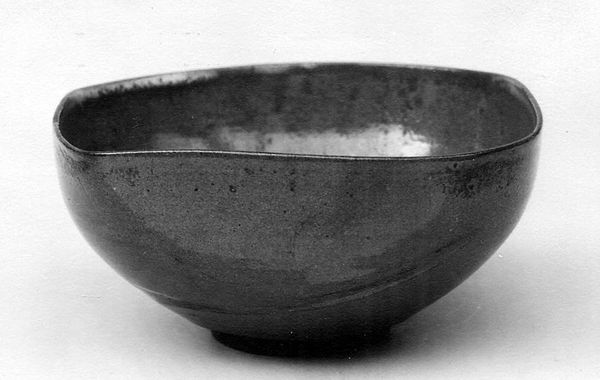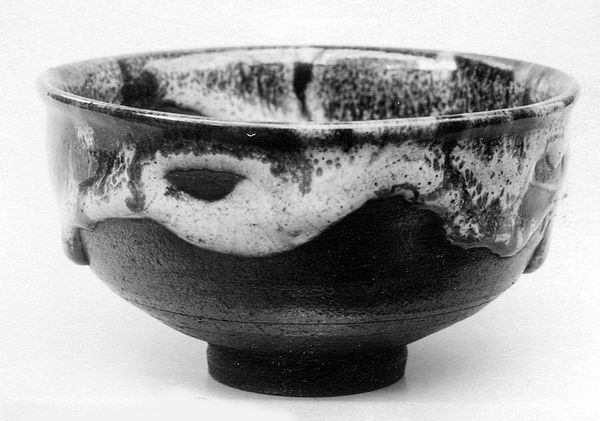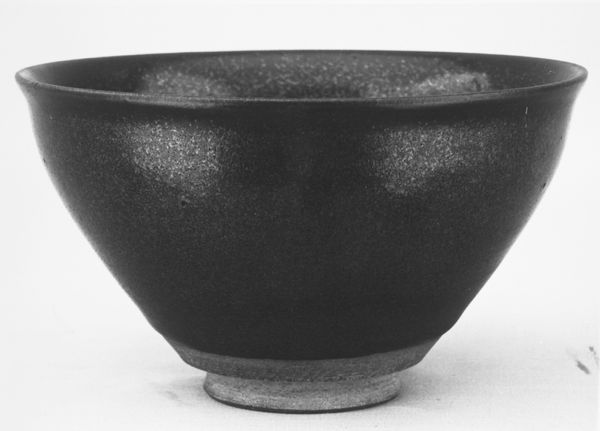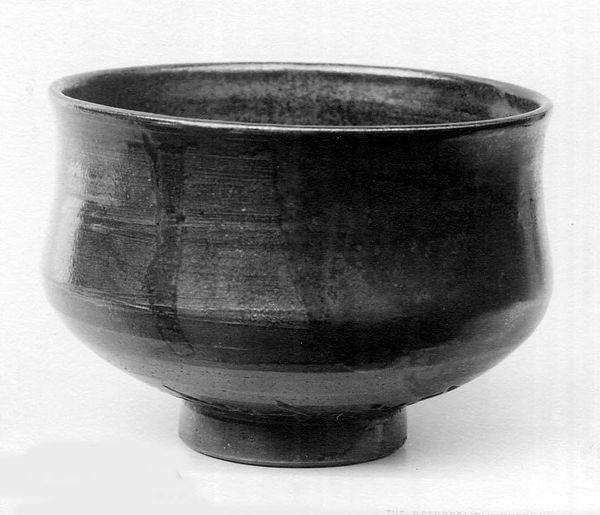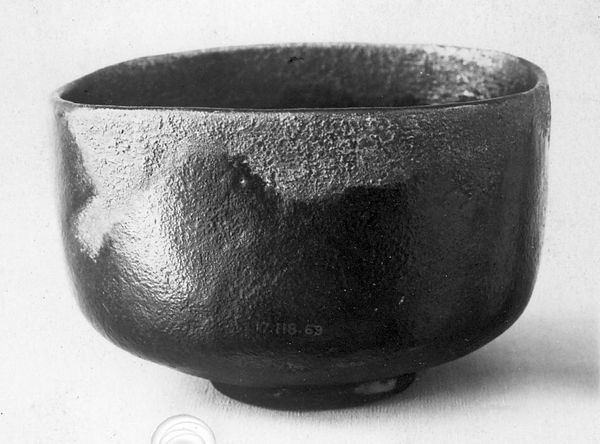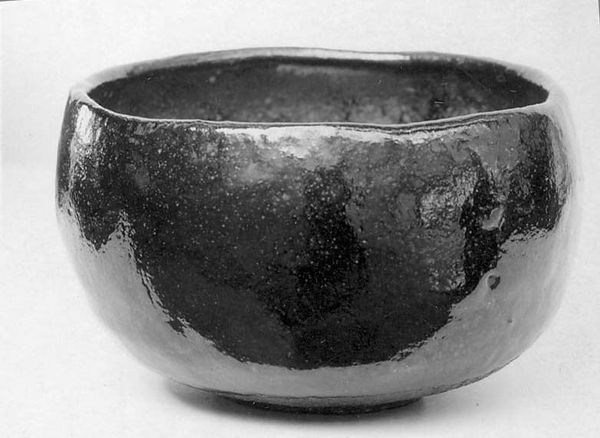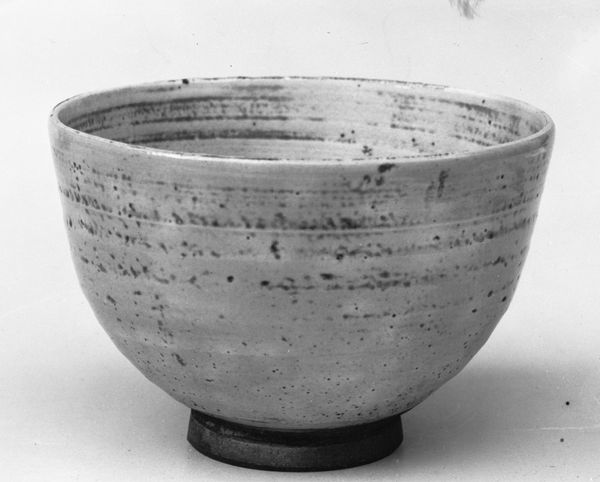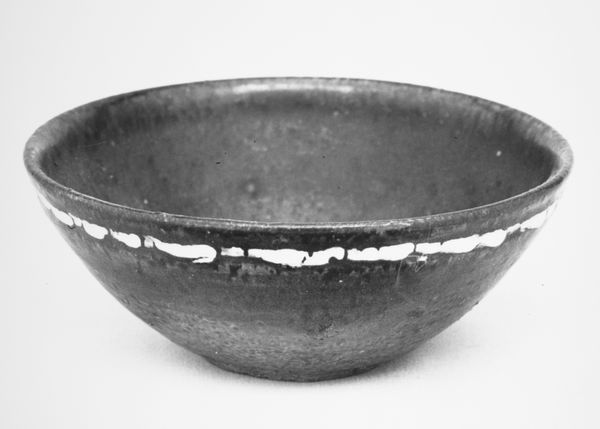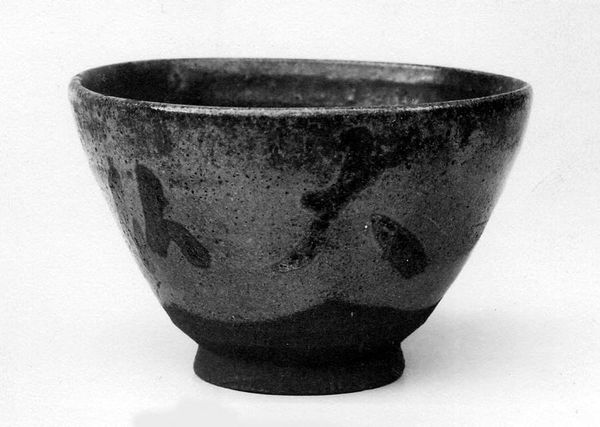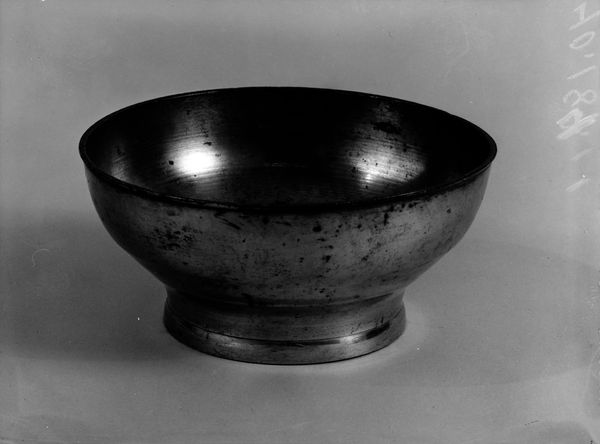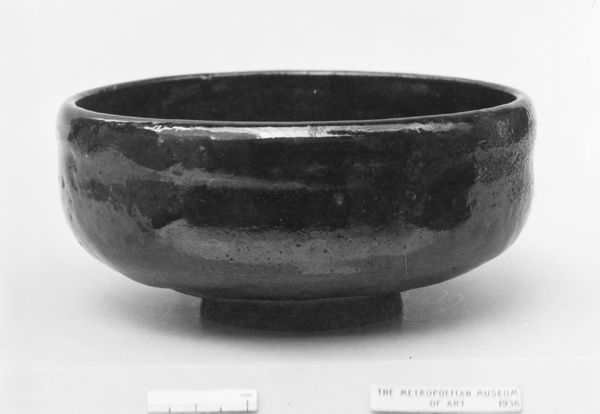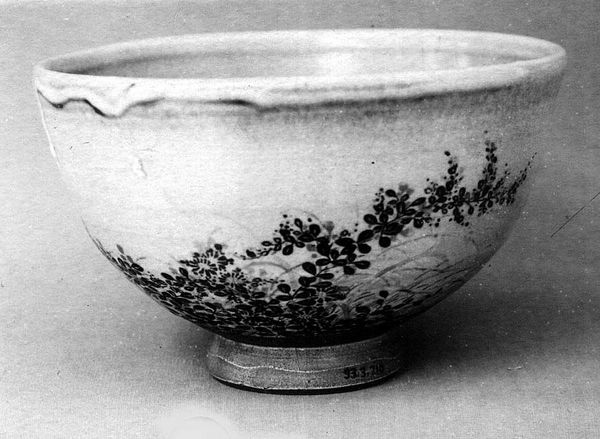
ceramic, photography
#
still-life-photography
#
asian-art
#
ceramic
#
photography
#
stoneware
#
macro photography
#
monochrome
#
monochrome
Dimensions: H. 2 in. (5.1 cm); Diam. 6 in. (15.2 cm)
Copyright: Public Domain
Curator: Ah, what a study in restraint. When I look at this bowl, created by Ninsei II sometime between 1640 and 1660, I am moved by the perfection of simple forms. Editor: There is definitely an ethereal stillness to it, the muted tones captured in this black and white photo emphasize a dreamlike quality, as though we are glimpsing an artifact pulled from the depths of memory itself. Curator: Precisely. We should note that this tea bowl, a humble, functional object, is elevated to something almost sacred. For centuries in Japan, tea bowls haven't been mere vessels; they've been active participants in a ritual, conductors of meaning and history. The monochrome palette throws us into a certain contemplation as well. Editor: Yes, and that color is telling. This wasn’t created monochrome but photographed, likely quite recently. Does the choice to depict this stoneware piece without color speak to an intentional extraction, from function to simply form. After all, bowls themselves have symbolic resonance aren’t simply about the materials that compose them. Think of chalices and vessels that have marked both secular and religious cultural histories, often the repository of something important or of a sacred liquid or object. Curator: Excellent point! By photographing it, we strip away that functionality. This is about more than sipping tea; it's about aesthetic and philosophical contemplation. It’s interesting you mentioned memory, too, since teaware has historically been passed through family lineage or as a sign of high honor, holding the experience and history it witnessed, it makes me think that even though it's one single teabowl it holds multitudes, literally brimming with its past use, it’s been handled, viewed, and lived-in countless times, which, is simply magic, is it not? Editor: Exactly! The beauty, after all, lives in that delicate balance – between what the teabowl *is* materially and what it has come to represent. Looking closer I can see some texture in the clay, what looks to be minute crackles that suggest this tea bowl had a life that spanned seasons. Curator: What you pointed out has made my observation much more beautiful now, and I invite the listeners to steep, no pun intended, on the complex significance it holds to them. Editor: And for myself, I appreciate being able to draw attention to this subtle beauty, the rich history, and culture embodied in this simple yet evocative vessel.
Comments
No comments
Be the first to comment and join the conversation on the ultimate creative platform.
